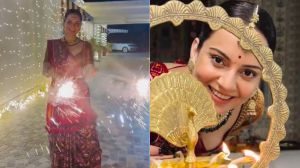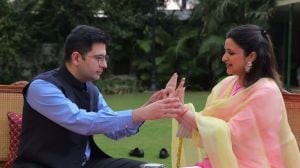Diwali is as much a festival of lights as it is of food. Being celebrated by over a billion Hindus, Sikhs, Jains and Newar Buddhists worldwide, the diversity cannot be starker. Yet, interestingly, food serves as a unifier during this biggest festival in India, which is peculiar given that diversity of food in the country is well-established.
Diwali foods were always a bit homogenised, says food critic and historian Pushpesh Pant. “Diwali involves Lakshmi pujan and her consort Vishnu lying in an ocean of milk along with her. So, there is a natural association with kheer,” he explains, adding: “However, as this quintessential Indian festive favourite travels through various places, its form undergoes significant changes.” In Bengal, it is called payesh. You make it with chena (a type of cheese curd) and it becomes chena payesh, the historian explains. Similarly, for Assamese, it is payokh, and is made with millet and jaggery. At the other end of the country, in Kerala, it is payasam, in which coconut milk is used instead of dairy and some lentils are used along with rice. “This shows a homogenisation of kheer but with regional variations,” he comments.
“Similarly, Punjabis make kada prasad. But halwa is made elsewhere too. It travels south and is made with rawa, an improvisation on the same theme,” Pant adds.
A prominent theme of Diwali is sharing food with friends and family. Deep-fried foods and sweets are the most common. “Scientifically, anything deep fried loses water, and, hence, has a longer shelf life,” says Pant, according to whom, this kind of homogenisation in food was forced upon our ancestors due to slow transport and no refrigeration options as this food was meant to be shared. “Nobody cares that gujiya is a typical Holi food. But it is deep-fried, coated with sugar which adds to a prolonged shelf-life, hence, made widely during Diwali too,” he says.
Reminiscing his childhood Diwali memories while growing up in Mumbai, chef Arun Sundararaj, director of culinary operations at New Delhi’s Taj Mahal Hotel, says, “Everyone used to send across thalis of snacks, which included some form of chiwda, shakkar and namak para, multiple types of laddoos, things that would last a couple of days. Naankhatai (shortbread biscuits) was probably something that you would only see around Diwali.”
No matter where you live, Lakshmi puja is a common thread, and the deity is offered “dried sweets like laddoos and barfi and fruits” which serve as a unifier, he says.
Similarly, restaurateur Zorawar Kalra says, “Food eaten during Diwali is not specific but is traditional overall. So, you have kaju katli and rolls, gulab jamun, samosas, jalebi, etc. But sweets are prominent.” “But there is no such thing as Diwali food. You cannot say I’ll make a recipe for Diwali foods. It will end up including the prominent traditional foods of India,” he adds.
A sweeter Diwali
A crucial homogenising Diwali element is the mithai (sweets), however, they differ across regions, comments Bombay Sweet Shop founder and COO Yash Bhanage. “Every region has its own version of mithai, and some of the all-time favourites include kaju katli, motichur laddoo, Mysore pak, coconut laddoos, barfis and dry fruit mithai creations. Buying mithai for self-indulgence, sharing and gifting them to loved ones is one of the most common food traditions during this time of the year,” he says.The base is different too. “In the north and west of India, Diwali sweets traditionally tend to be flour based, made in ghee with nuts—laddoos, barfis and kaju katli being the most beloved. And in the south, sweets tend to be more rice or lentil based, and include ingredients like coconut. The Mysore pak, coconut barfi or coconut laddoo being most popular down south,” he adds.
“Sweets in Indian culture have positive connotations to them,” says Sukesh Kanchan, executive chef at Sana-di-ge, Delhi. “The common sweets in households include laddoos, balushahi and halwa, not to forget kheel batasha and khilone (edible sugar crafted into animal shapes), which are offered during the Diwali puja.”
However, writer Colleen Taylor Sen thinks otherwise. In her latest Feast and Fasts: A History of Food in India, she writes, “Sweets are an intrinsic part of many celebrations, perhaps because they were a rare luxury for poor people and also because, since they were vegetarian and fried, everyone—regardless of religion and caste— could enjoy them. Sweets were traditionally made at home, but today most are purchased from professional confectioners.”
Poverty is a major determiner of what people consume during this festival. “However, even if one is poor, she would want to have sweets of an affordable kind,” says Pant. “So, if you do not have milk or rice for kheer, you can make one by grating sweet potato. You can have laddoos or barfis that cost less,” he explains, while stressing how tricky it is to determine who is poor. “Also, there is a trickle-down effect here where the rich share food with the poor, maybe not voluntarily but for religious reasons,” he says, adding: “Despite these things, those living below the poverty line might not get sweets even on this festival.”
Special preparations
“As compared to the tradition of making sweets on the occasion of Diwali across India, people in West Bengal prepare a savoury dish called chhodo shaak. It is made using 14 green leafy vegetables. This is a special dish made for Kali Puja performed around Diwali,” says chef Kanchan. “But Kali Puja is not the same as Diwali. Goddess Kali is worshiped here and not Lakshmi,” adds Pant. “Speaking of Goa, poha (flattened rice) is prepared on this day as per the tradition,” says chef Sundararaj, adding: “Three types are prepared, one with potato and onion, a dry one with jaggery, and a third one using milk.”
Similarly in Maharashtra, “different types of murukkus are made. There is also gud ka prasad, made with jaggery (gud), ginger and spices,” he explains. “In Udupi, people eat non-veg on Naraka Chaturthi, while Rajasthanis make mawa ki kachori,” he adds.
A five-day affair
In much of north India, Diwali is a five-day affair, starting with Dhanteras and ending with Bhai Dooj. While food traditions are almost homogenous throughout, the fourth day, known as Annakuta, stands out and revolves around God Krishna.
Explaining this in her latest book, author Sen writes, “One of the world’s most spectacular food-related events is the Annakuta, or Mountain of Food, held annually at a temple in Mount Govardhan near Vrindavan at the end of the rainy season. It commemorates an event in Krishna’s childhood when he persuaded the local cowherds to make their annual offerings of harvest grains and pulses to Mount Govardhan instead of the god Indra. Angered, Indra punished the people by sending a violent rainstorm.”
Hence, to commemorate this event, worshippers build a large mound of rice, sometimes weighing thousands of kilos, in the temple courtyard, facing the sanctum where the deity resides. “They surround it with hundreds of dishes of sweets, savouries, vegetables, and grains, all vegetarian and containing no onions or garlic. Pilgrims come to Govardhan to view these displays and enjoy the food, which is later distributed among devotees,” writes Sen.
After liberalisation
Although liberalisation has been a watershed event in independent India’s history that allowed the entry of numerous foreign brands into the country, it might not have had much impact on the festive food, according to Pant. “It is because the multinational foreign food chains do not take out a Diwali menu, with the exception of maybe Cadbury with its ‘kuch meetha ho jaye’ campaign,” he says.
However, with liberalisation, more people migrated within India in search of jobs and took their festive food traditions elsewhere, the historian comments. Lately, it seems India’s traditional Diwali has had some western impact as “our gift hampers to others have come to include wine, chocolates and cheese instead of traditional mithais (sweets),” he adds.
A healthier menu
A tilt towards healthy eating impacts the Diwali food, as now people care about where they are sourcing their products from. “Instead of choosing Indian sweets that are excessively greasy, syrupy, artificially flavoured and coloured confections, patrons with evolved palates in today’s day and age want mithai that is contemporary, relevant, fun and conscientiously made,” says Bhanage. “At the Bombay Sweet Shop, our Diwali collection includes vegan power barfi, a refined sugar-free dry fruit barfi with jaggery, dates, mixed nuts, seeds, coconut sugar and puffed amaranth to cater to people looking for a healthier alternative,” he adds.
Elaborating on this, chef Sundararaj says that customers might have quinoa kheer, or granola mix or oats barfi. “There are options available for everyone,” he adds. Similarly, Jatinder Pal Singh, executive chef of The Leela Bhartiya City, Bengaluru, says the focus on healthy eating has tilted the consumer behavioural patterns towards healthy eating.
Speaking on veganism, Kalra says India is a country where it is not difficult to be a vegetarian. “Also, there are several sweets available, such as kaju katli, methi laddoos that do not contain dairy, hence, vegans can also have them,” he says, adding: “The world is moving towards healthier food, which is a good thing. But there is also time to celebrate.”
“A prominent theme of Diwali is sharing food with friends and family. Deep-fried foods and sweets are common. Scientifically, anything deep fried loses water, and has a longer shelf life”
— Pushpesh Pant, food critic & historian
“No matter where you live, Lakshmi puja is a common thread, and the deity is offered dried sweets like laddoos and barfis and fruits, which serve as a unifier”
— Chef Arun Sundararaj, director, culinary operations, Taj Mahal Hotel, New Delhi
Every region has its own version of mithai. Buying them for self-indulgence, sharing and gifting them to loved ones is one of the most common food traditions during this time of the year
— Yash Bhanage, founder & COO, Bombay Sweet Shop
Recipe: Black Carrot Halwa Tart
Ingredients
Black carrot: 500 gm
Sugar: 100 gm
Cardamom powder: 10 gm
Clarified butter: 20 ml
Tart
Butter: 500 gm
Sugar: 250 gm
Refined flour: 750 gm
Method
- Make a tart shell out of flour, sugar and butter, and blind bake it
- Grate carrots and cook with sugar and ghee until water evaporates
- Add milk and cardamom powder and bring to a boil
- Once the carrots are fully cooked with the milk and thickens, set aside to cool
- Make a paste put of paan and mix into vanilla ice cream
- Pipe carrot mixture into the tart shell and gently bake at 160°C until golden brown
- Place paan ice cream on a gulkhand crumb and plate the tart
- Pipe chocolate ganache, add fresh berries and garnish with a caramel shard
— Rajesh Singh, executive sous chef, Taj Mahal Hotel, New Delhi









